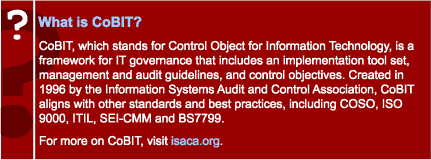

By Steven Russman
When Karen Metrakos took over as head of BMO Financial Group’s enterprise infrastructure technology area two years ago, she knew that asset management had to become a core discipline if she expected to contain IT costs.
“How can you run IT like a business and leverage your assets if you don’t know what assets you have?” says Metrakos. “It’s an important aspect of being a CIO, and developing an asset management process that integrates with day-to-day operational processes takes focus and commitment.” Metrakos’ commitment is much more than tracking assets and contracts—it’s part of a multiyear initiative to reengineer her organization’s processes. “I don’t know an organization that doesn’t want to lower the cost of IT,” she says, adding, “Here’s a way to do it.”
Based in Toronto, BMO Financial Group has some 37,000 desktops across Canada and the United States and in major cities worldwide. In 2001 the company began investing heavily in process-improvement initiatives such as ITIL®, the Information Technology Infrastructure Library; ISO 9001; and the Software Engineering Institute’s Capability Maturity Model.
Using these frameworks, Metrakos has shown the business units’ end users the benefits that asset management brings the organization—in financial terms. She credits improved efficiency and reduced costs to a clear organizational vision.“ With the right organizational structure and accountability, a clear vision and a relentless focus on ITIL with metrics in place, we have been able to deliver higher service levels with lower IT costs while absorbing 30 percent growth in demand with a workforce that has impressive employee opinion-survey results,” says Metrakos.
Considering this success, why don’t more top-tier companies embrace IT asset management? It is no small task, for one thing. In addition to organizational structure and processes that ensure accountability, organizations need the support and the will to dismantle the internal barriers that often result in infighting and turf battles.
“When I first moved into this job, I couldn’t find a single source or view of the assets we were managing,” says Metrakos. “Which machines are leased? Which do we own? I realized the structure needed fixing, that functions were fragmented, and accountability was lacking.”
Metrakos brought the functions necessary for IT asset management under her roof by emphasizing proactive financial management of asset costs. She created three groups: the desktop group oversees desktop hardware and software assets, as well as e-mail; the application-hosting group handles servers, including midrange and mainframe hardware and software; and the network group manages firewalls and voice and data hardware and software. Each group is empowered to make decisions but is also held accountable for results. The approach appears to be paying off.
“Our desktop group has been in place for a while, and we’ve seen savings in hardware negotiations and on enterprise licensing deals. We’ve lowered maintenance costs by 50 percent. Given the amount we spend, that’s a lot of money” says Metrakos, adding that, “For servers, we’ve developed consolidation strategies that [eliminates] a piecemeal approach.”
In addition, the groups are building common processes to ensure that all of the data is resident in a common configuration management database (CMDB). Metrakos sees asset and configuration management inextricably linked by their shared critical reliance on accurate inventory-item information.
For example, the CMDB feeds the asset management processes with financial and other data on inventory items, such as the details of purchase/lease agreements, depreciation estimates and vendor profiles. Although this information may come from other systems, it is the CMDB that provides data integrity and allows for a consistent look and feel to the presentation of the information.
BMO’s view of IT asset management—more encompassing than most—includes a consolidated view of service, configuration and financial information, including a framework for strategic and tactical decision making. While proponents of the service management-focused ITIL framework devote much time to the important areas of change management, configuration, and problem and incident tracking, asset management is often mentioned in passing as a function to be relegated to the accountants.
Not so at BMO. Metrakos’ groups have developed a framework for asset management processes based on ITIL configuration-management processes, and a governance structure that is tightly coupled to CoBIT.

A 25-year veteran of BMO, Metrakos understands how IT works. She has held various positions throughout the bank, including software engineering, system development, project management, systems architecture, communications and IT operations. That wide-ranging experience has helped her to know the organization from top to bottom. Most important, she understands how the different business units make money and can talk their languages when it comes to explaining an IT program’s benefits and investments.
“It’s important to link these IT programs—from the client’s perspective—to the services they need to run their business and the resultant financial impacts,” says Metrakos.The proof of this huge commitment and undertaking is in the results. Metrakos says, “The staff believes we are heading in the right direction and doing the right things. Costs are going down, and it’s clearly worth the investment.”
For more about BMO, see the January 2004 issue of Technology Asset Manager.
Steven Russman is the publisher of Technology Asset Manager.

Technology Asset Manager is distributed in print and electronically. Permission to reproduce this publication has been granted by Enterprise Consulting Partners LLC (ECP). Each qualifying subscription entitles the subscriber to one (1) printed and one (1) electronic copy. Any further reproduction or redistribution of this publication in any form without prior written approval is prohibited. ECP’s permission to reproduce this publication should not be deemed to be an endorsement of any company or product. ECP publications are intended to be one of many information sources, and decision-makers should not rely solely on an ECP evaluation. ECP expressly disclaims all warranties, express or implied, including but not limited to fitness of this research for a particular purpose or merchantability. Trademarks are the property of their respective owners. Entire contents © ECP. All rights reserved.